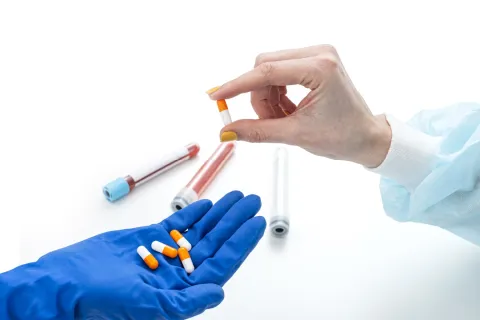
In the era of personalized medications, precision medicine revolutionized the delivery of biologicals, ensuring safety and efficacy by comprehending the product’s effect at an individual level. Pharmacogenomics (PGx) is one of the components of precision medicine owing to its role in optimal dose selection and effective, dose-responsive, individual identification that can avoid adverse reactions. With the rise of advanced Regulatory Information Management (RIM) systems, structured labeling frameworks, and real-time labeling updates, PGx-driven biological drug labeling is becoming a core requirement for global Regulatory compliance.
Furthermore, with the advent of PGx biomarkers, the fate of biologicals in terms of pharmacokinetics and pharmacodynamics can be assured. Life Sciences companies manufacturing biologicals provide information on the PGx biomarkers in the labeling section, which assists healthcare practitioners and patients during their administration. The genesis of the inclusion of PGx biomarkers details can be traced back to early 2013 with the United States Food and Drug Administration’s (US FDA’s) guidance titled ‘Clinical Pharmacogenomics: Premarket Evaluation in Early-phase Clinical Studies and Recommendations for Labeling.’ It mentioned that the PGx labeling must describe the genomic marker and functional effects of genomic variants after drug administration.
Today, these requirements align closely with global initiatives such as IDMP implementation, structured content and labeling (SCL), and eLabeling expectations across major markets, emphasizing data accuracy and standardized labeling practices.
As per a survey conducted in early 2021, the US FDA witnessed a threefold (3x) increase in biological approvals containing PGx biomarker labeling for therapeutic and congenital anomalies from 2000 to 2020. Statistically, the increase went from 10.3% in 2000 to 28.2% in 2020. This approval upsurge indicates the adherence of the pharmaceutical companies to the guidance and inclusion of PGx biomarkers’ labeling to ensure public health. Although the inclusion of PGx information in drug labels was noticed for all clinical areas, they were prominent in some therapeutic areas.
The significance of PGx biomarker labeling can give insights to the stakeholders on the following points:
- Mechanism of drug action
- Associated adverse events
- Genotypic information on dosing
- Clinical response variability across individuals through drug exposure
- Polymorphic drug targets and disposition genes
- Clinical trials adopted during the development
Such insights are increasingly being integrated into digital label repositories, structured labeling templates, and automated lifecycle labeling systems to ensure consistency across global submissions.
In August 2022, the US FDA released data tabulating the list of PGx biomarkers, drugs, therapeutic areas, and instructions to be incorporated in the labeling section. The table below is an excerpt from the published comprehensive biomarkers list with their corresponding labeling sections instructions/warnings.
| Sr. No. | Labeling Sections | Biomarkers |
| 1. | Adverse Reactions |
|
| 2. | Adverse Reactions, Clinical Studies |
|
| 3. | Boxed Warning, Warnings and Precautions, Use in Specific Populations, Patient Counselling Information, Contraindications |
|
| 4. | Clinical Pharmacology |
|
| 5. | Clinical Studies |
|
| 6. | Contraindications |
|
| 7. | Indications and Usage, Adverse Reactions, Clinical Studies |
|
| 8. | Indications and Usage, Dosage and Administration, Adverse Reactions, Clinical Studies |
|
| 9. | Indications and Usage, Dosage and Administration, Adverse Reactions, Use in Specific Populations, Clinical Studies |
|
| 10. | Indications and Usage, Dosage and Administration, Warnings and Precautions, Adverse Reactions, Use in Specific Populations, Clinical Studies |
|
| 11. | Warnings |
|
Figure 1. Labeling instructions for respective biomarkers, an excerpt from the US FDA website
With the inclusion of PGx biomarker labeling for drugs and biologicals, it is essential to adhere to and comply with global labeling standards. Pharmaceutical companies must now align PGx content with eCTD 4.0 requirements, global labeling governance frameworks, structured data submissions, and automated labeling update processes to remain compliant. Precision medicine-based labeling requires tailor-made business strategies and expertise to sail through Regulatory processes.At Freyr, our expertise spans end-to-end labeling operations, including PGx-driven content authoring, structured labeling implementation, IDMP data alignment, eLabeling transformation, and global lifecycle management for biologicals. Connect now for more updates on Freyr's in-depth and proven expertise.









